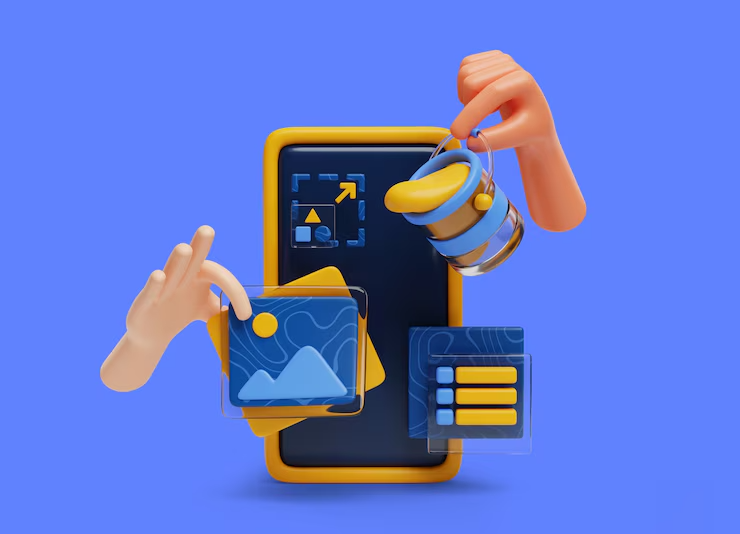AI copilots are becoming integral to modern work and daily life, acting as ever-present digital collaborators that support, suggest, and sometimes even create alongside us. Whether you’re a writer, developer, marketer, educator, or student, chances are you’ve already begun to experience the influence of an AI copilot in some form. But what has really changed since we welcomed these intelligent tools into our workflow?
This post dives into the tangible transformations AI copilots bring to personal productivity, creativity, collaboration, and even our cognitive habits. It reflects on how these shifts are redefining how we work, think, and relate to technology.
Gone are the days when productivity tools were just passive platforms. With AI copilots embedded into apps like Microsoft 365, Notion, Google Workspace, Figma, and code editors, they’ve become more like active teammates.
Imagine starting your workday with a digital assistant that has already prioritized your to-do list, summarized your unread emails, and proposed an agenda for your upcoming meeting. This is not science fiction—it’s the new normal.
AI copilots have made mundane routines smarter:
-
Drafting emails and reports: No more staring at a blank screen. AI can generate outlines or full drafts based on a few prompts.
-
Organizing information: From research to meeting notes, copilots help categorize, tag, and summarize large chunks of data.
-
Project management: Some copilots track progress, suggest deadlines, and remind team members of tasks.
By reducing cognitive overhead, they free users to focus on higher-level thinking and creativity.
Creative professionals have often approached AI with a mix of excitement and caution. But AI copilots have gradually become trusted collaborators rather than competitors.
For writers:
AI tools can offer:
-
Synonym suggestions
-
Tone adjustments
-
Outlines for stories or articles
-
Character development prompts for fiction
Instead of replacing the writer’s voice, they enhance it, helping overcome writer’s block or generating alternate perspectives.
For designers:
AI copilots in tools like Adobe Firefly or Figma now assist in:
-
Generating color palettes
-
Drafting layouts
-
Creating visual assets from text prompts
Creativity has become more iterative. Instead of spending hours on one concept, creators can explore dozens of variations in minutes.
Education is another area transformed by AI copilots. Teachers use them to:
-
Generate lesson plans
-
Create personalized quizzes
-
Translate content
-
Provide differentiated materials for varied skill levels
Students benefit from on-demand tutoring. AI copilots:
-
Explain difficult concepts
-
Provide instant feedback on essays
-
Offer math problem step-by-step solutions
-
Help prepare for exams with tailored study plans
Rather than replace traditional learning, AI copilots enhance it with immediacy and personalization. They adapt to individual pace and style—offering a customized path to mastery.
Remote and hybrid work have made asynchronous collaboration the norm. AI copilots play a key role in keeping communication seamless.
In daily operations, they:
-
Summarize Slack or Teams threads
-
Convert meeting transcripts into action items
-
Automatically format documents and presentations
-
Translate messages across languages
In group settings, they act as silent participants, capturing knowledge and reducing the need for repetition. Meetings become more focused, and follow-ups clearer. It’s like having a project manager, editor, and translator all rolled into one.
One of the most profound shifts AI copilots introduce is cognitive. They change how we think, how we approach problems, and even how we learn.
1. Prompt-based thinking
Prompting has become a new form of literacy. Knowing how to ask the right question is now a key professional skill.
2. Exploratory work
AI copilots support branching paths. You can ask for five options, compare them, and then refine. This expands ideation and discovery.
3. Real-time feedback
Immediate AI response loops help us test ideas faster. It’s like brainstorming with an ever-available thought partner.
The psychological impact of working with an AI copilot varies.
Confidence boost:
-
Professionals report feeling more empowered.
-
Beginners in any field can try things without fear of judgment.
Concerns:
-
Overreliance on AI suggestions may reduce deep learning or original thinking.
-
Fear of job displacement or being “less needed” lingers in some industries.
These emotions are valid. The key lies in viewing AI copilots as tools of empowerment, not replacements. Like calculators or spreadsheets, they enhance our capabilities without diminishing our worth.
AI copilots are not just for tech-savvy professionals. They’re impacting:
-
Freelancers and solopreneurs: Who now operate with the support of an entire virtual team.
-
Non-native English speakers: Who use AI to refine communication.
-
Students in underserved communities: Gaining access to tutoring and resources previously unavailable.
-
People with disabilities: Using voice-to-text, text simplification, or screen readers enhanced by AI.
As the tools become more intuitive, their reach and impact only grow.
Workplace dynamics are evolving. The lines between roles, tools, and outputs blur with AI in the mix.
Managers
Can use copilots to:
-
Track KPIs
-
Analyze sentiment in feedback
-
Prepare reports instantly
Teams
Collaborate across time zones with AI summarizing discussions and aligning action points.
Individuals
Get mentorship-like guidance on tasks, faster onboarding, and help navigating unfamiliar platforms.
The result? A workplace that’s faster, flatter, and more flexible.
No transformation is without its trade-offs. AI copilots bring ethical challenges that must be addressed:
-
Data privacy: Who sees your prompts and outputs?
-
Bias and fairness: AI may reinforce harmful stereotypes or ignore minority perspectives.
-
Accountability: If a decision is influenced by an AI suggestion, who owns the outcome?
Transparent governance, clear usage policies, and ongoing education are vital to ensure AI copilots serve ethically and responsibly.
The future of AI copilots is both exciting and complex. Here’s what we can expect:
-
Contextual understanding: Copilots will better grasp nuance, industry jargon, and personal style.
-
Multimodal capabilities: Combining voice, text, images, and gestures.
-
Greater emotional intelligence: Recognizing user frustration, confusion, or urgency and responding appropriately.
-
Seamless integration: Across devices, platforms, and physical-digital environments.
-
Hyper-personalization: Tailoring experiences to individual goals, tone, and workflows.
With these advancements, AI copilots won’t just support tasks—they’ll help define goals and shape strategy.
Life with an AI copilot isn’t just about doing things faster. It’s about doing things differently—and better. From freeing up cognitive space to encouraging experimentation and offering emotional support, the impact is multidimensional.
Whether you’re optimizing a daily schedule or reimagining an entire business model, AI copilots are here to help you think more clearly, create more boldly, and work more humanely.
So what’s changed for you?
Chances are, with an AI copilot by your side, the answer is: more than you thought possible






